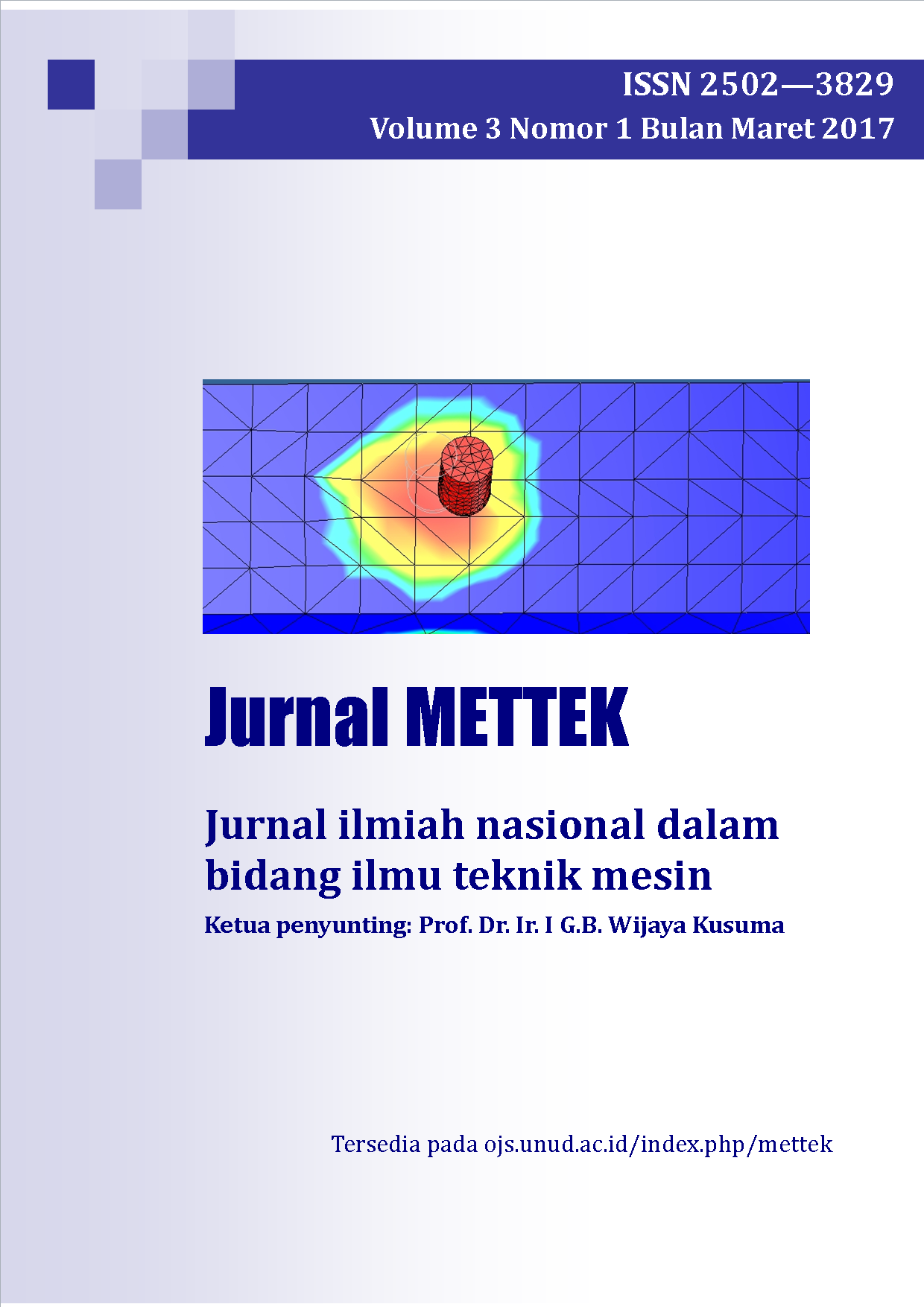PENGUJIAN ALAT KONVERSI SAMPAH MENJADI ETANOL
Abstract
Sampah Organik merupakan sampah yang dapat di kelola sebagai bahan baku pembuatan bioetanol. Untuk menghasilkan bioetanol diperlukan sebuah alat yang bisa mengkonversi sampah organik menjadi etanol. Batasan yang ditentukan dalam pembuatan alat konversi sampah menjadi etanol diantaranya fungsi alat untuk mengkonversi sampah menjadi etanol minimal dengan volume 250 ml per 10 kg sampah organik, divariasikan dengan temperatur 20-400 C, divariasikan dengan tiga macam campuran ragi dan difermentasikan selama 3 hari. Setelah alat dinyatakan dapat bekerja sesuai indikator pengujian, maka dilanjutkan dengan proses pengamatan produksi etanol. Prosedur pengujian yang diamati adalah dari segi jumlah volume etanol dan jumlah nilai kadar alkohol yang dihasilkan. Dari hasil perhitungan perencanaan alat didapatkan dimensi poros dengan diameter 12 mm, tangki sampah berdiameter 600 mm dengan panjang 800 mm serta terdapat heater, menggunakan gearbox 1:50 dan menggunakan motor listrik 0,5 Hp. Dari hasil pengujian pengamatan jumlah produksi etanol dan kadar alkoholnya dapat simpulkan bahwa jumlah volume produksi etanol dan nilai kadar alkoholnya sangat berpengaruh pada variasi campuran ragi, putaran tangki, dan temperatur yang digunakan. Hal itu dikarenakan adanya faktor-faktor yang mendukung kondisi kamir untuk memfermentasikan produk menjadi etanol. Pada temperatur 200 C, campuran ragi 1 serta putaran 5 rpm menunjukkan jumlah produksi etanol dan nilai kadar alkohol paling tinggi yaitu 656 ml etanol dengan kadar alkohol 16 %
Organic waste is a waste that can be managed as a raw material for making bioethanol. To produce bioethanol required a tool that can convert organic waste into ethanol. The limits specified in the manufacture of waste conversion tools into ethanol include a tool function for converting waste into minimal ethanol with a volume of 250 ml per 10 kg of organic waste, varied with temperatures of 20-400 C, varied with three different yeast mixtures and fermented for 3 days. Once the tool is declared to work according to the test indicator, then proceed with the observation process of ethanol production. The test procedure observed was in terms of the amount of ethanol volume and the amount of alcohol content produced. From the calculation of tool planning got the dimension of the shaft with a diameter of 12 mm, garbage tank diameter 600 mm with a length of 800 mm and there is a heater, using 1:50 gearbox and using 0.5 hp electric motor. From the results of the observation test the amount of ethanol production and the alcohol content can be concluded that the amount of ethanol production volume and its alcohol content value greatly influence the variation of yeast mix, tank rotation, and temperature used. This is due to the factors that support the condition of kamir to ferment the product into ethanol. At a temperature of 200 C, the yeast 1 and 5-rpm mixture showed the highest amount of ethanol production and alcohol content of 656 ml of ethanol with 16% alcohol content.
Downloads
References
[2] Ginting, Umumtha dan Sibarani S.M. 1995. Manajemen Produksi. Bandung: Pusat pengembangan pendidikan politeknik.

This work is licensed under a Creative Commons Attribution-NonCommercial-ShareAlike 4.0 International License.







